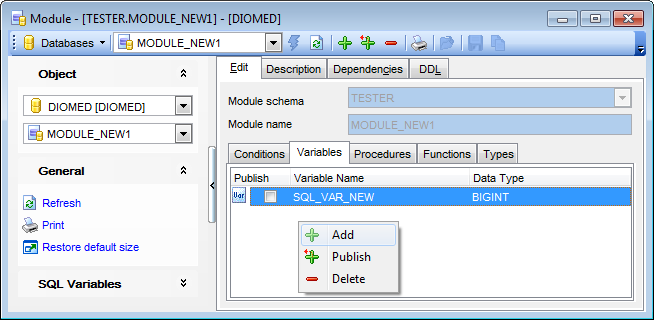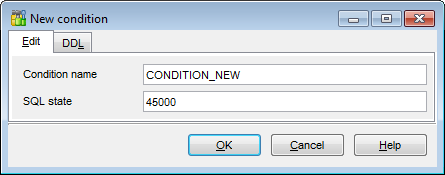Online Documentation for SQL Manager for DB2
Editing module
This how Module Editor looks when an existing module is opened.

Module name and Module schema fields contain module name and its parent schema correspondingly and can't be modified.
The Edit tab of the wizard consists of five tabs: Conditions, Variables, Procedures, Functions, Types.
Select a tab to manage corresponding module object.
Context menu allows you to ![]() Add,
Add, ![]() Publish or
Publish or ![]() Delete an object.
Delete an object.
Use the ![]() Add item to add an object to the module.
Add item to add an object to the module.
Use the ![]() Publish item to add a new object to the module and make it available for use outside the module.
Publish item to add a new object to the module and make it available for use outside the module.
Use the ![]() Delete item to remove selected object from the module.
Delete item to remove selected object from the module.
When you add or publish an object, the corresponding editor appears. Topics listed below provide you with necessary information about these editors:
Condition
You can define conditions, that can be used by module functions.

Condition name
Define the name of the condition. The name must not identify an existing condition in the module.
SQL state
Specify the SQLSTATE that is associated with the condition. The string-constant must be specified as five characters and must not be '00'.


































































